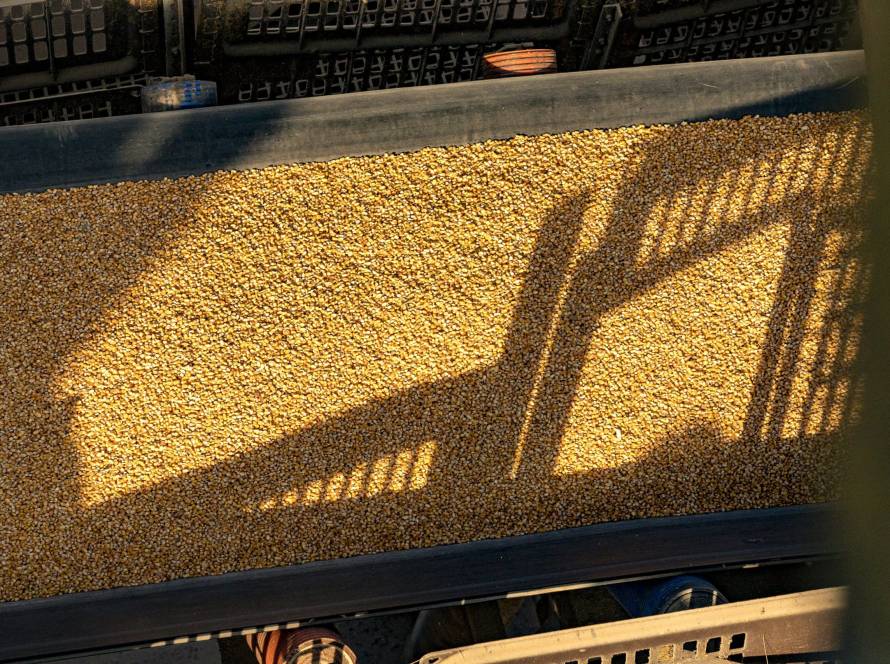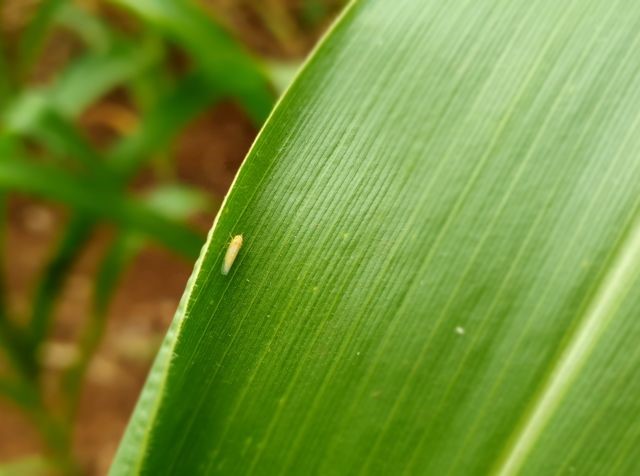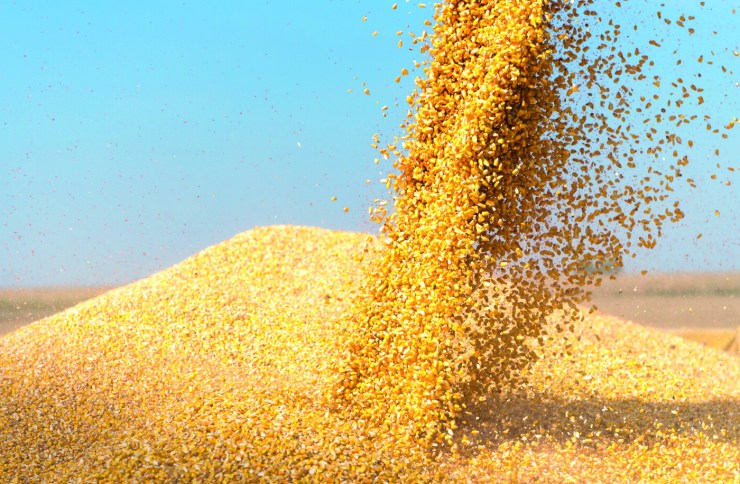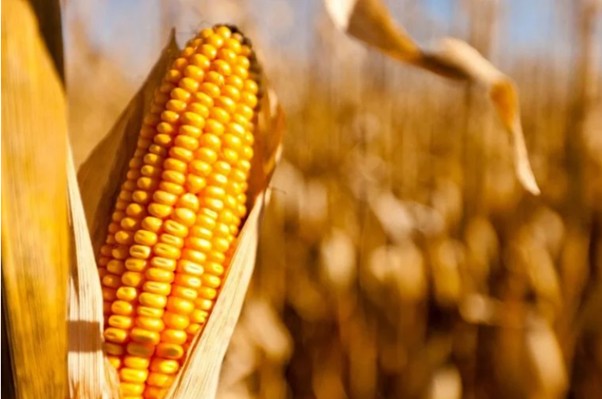Scientists from the University of Salamanca, in cooperation with researchers and corn producers from different countries, including those from Embrapa Meio Ambiente, studied for the first time the population structure of the fungus that causes anthracnose in 108 isolates and found strong evidence that genetic recombination, whether through sexual reproduction or alternative mechanisms, plays an important role in its structure, which differs from the traditional view that it is asexual. The researchers concluded that this recombination is frequent.

Scientists also found evidence of recent migration of isolates between Europe and Argentina, possibly due to the importation of infected plant material, which suggests that anthracnose has the potential to become much more significant, mainly due to highly aggressive isolates, the expansion of the pathogen's geographic distribution and the increased susceptibility of agroecosystems accentuated by climate change.
Symptomatic corn stalks provided by an international network of researchers and corn producers were obtained, allowing sampling from nine countries (Argentina, Brazil, Canada, Croatia, Slovenia, United States, France, Portugal and Switzerland) where the disease occurs. Specifically from Brazil, 20 isolates of Colletotrichum graminicola, the causal agent of anthracnose, obtained from various parts of the country, were analyzed, explains Wagner Bettiol, a researcher at Embrapa Meio Ambiente. “Considering South America, the isolates originating from Brazil were grouped in separate branches from those from Argentina, suggesting independent introductions,” comments Bettiol.
“In addition, the study identified three main branches among the isolates studied, one from North America, one from Europe and one from Brazil, suggesting that each had a unique evolutionary history,” highlights Serenella Sukno, from the University of Salamanca. “Understanding genetic diversity and the mechanisms resulting from this variation in pathogen populations is crucial for the development of effective control strategies,” emphasizes the professor.
Species with the potential for genetic exchange are more likely to overcome control measures because recombination can result in new combinations of alleles that increase diversity and accelerate adaptation at the field scale. According to Sukno, no correlation was found between virulence and population structure, although substantial differences in the virulence spectrum were observed.
Several isolates were more aggressive than the strain originally collected in North America in 1972 during the US outbreak. This is particularly important because this strain represents the genetic diversity that existed during the outbreak, and more aggressive strains are now present in nature, which may pose a risk of developing new, more destructive outbreaks.
There was a significant reduction in productivity in the hybrids tested, which was associated, among other factors, with the greater aggressiveness of the pathogen and greater genetic differentiation in the populations during the crop cycle. “We found molecular evidence of genetic recombination for the three global populations of the fungus,” highlights Professor Michael Thon, from the University of Salamanca.
The use of distinct corn genotypes may result in different responses to fungal infection. Another significant aspect is that resistance to anthracnose is quantitatively inherited, i.e., host resistance is controlled by several genes with additive genetic effects. The three genetic clades of this fungus – a grouping that includes a common ancestor and its descendants – detected may have distinct evolutionary origins, encompassing a diverse combination of virulence genes, which may cause different defense responses in the host.
The research also highlights that the large variability in virulence should be considered when selecting resistant corn varieties. This has direct implications for disease management because migration can cause the movement of more virulent and fungicide-resistant genotypes.
According to Flávia Rogério of the University of Salamanca, the modification of natural environments caused by modern agriculture offers new opportunities for natural selection. The use of crops with limited genetic diversity increases the risk of global disease spread because pathogen genotypes can spread rapidly through genetically uniform host populations.
Furthermore, ongoing climate change may alter the distribution of plant pathogens on a global scale because it may affect disease development, aiding the spread and survival of pathogens and their establishment in previously unsuitable regions.
Economic importance
Corn is the second most cultivated cereal in the world, with a harvested area of almost 200 million hectares. Together with rice and wheat, it provides almost half of all daily calories in the human diet. Although many diseases affect its production, anthracnose is one of the most important and requires the use of integrated practices to control it, as it can infect most plant tissues, although stem rot and seedling blight can cause the most significant economic damage.
The disease is distributed globally and is of great importance in several regions of the world. The nature of the fungal propagules, i.e. small and numerous spores, favors long-distance dispersion, resulting in dissemination between continents, since one of the main forms of long-distance dissemination occurs via contaminated seeds.
In Brazil, where the first record was in 1965, in Campinas, SP, corn is planted in two distinct harvests, summer and winter, a practice that contributes to the increase of primary inoculum in the area. All materials were used in accordance with the International Treaty on Plant Genetic Resources for Food and Agriculture, adopted by the Food and Agriculture Organization (FAO) on November 3, 2001.
The authors are Flávia Rogério, University of Salamanca, Spain, Riccardo Baroncelli, University of Bologna, Italy, Francisco Cuevas-Fernández and Sioly Becerra, University of Salamanca, JoAnne Crouch, United States Department of Agriculture (USDA), Wagner Bettiol, Embrapa Environment, M. Andrea Azcárate Peril, University of North Carolina, Martha Malapi-Wight, United States Department of Agriculture (USDA), Veronique Ortega, Syngenta seeds, Javier Betran, Bayer Crop Science/Monsanto SAS, Albert Tenuta, University of Guelph-Ridgetown, Canada, José Dambolena, Universidad Nacional de Córdoba, Argentina, Paul Esker, The Pennsylvania State University, State College, Pennsylvania, USA, Pedro Revilla, Spanish National Research Council, Tamra Jackson-Ziems, University of Nebraska-Lincoln, USA, Jürg Hiltbrunner, Federal Department of Economic Affairs, Switzerland, Gary Munkvold, State University, Ames, Iowa, USA, Ivica Buhinicek, BC Institute for Breeding and Production of Field Crops, Croatia, José Vicente-Villardón, Serenella Sukno and Michael Thon, Universidad de Salamanca, and the full work is here.





